#krishnaism
Explore tagged Tumblr posts
Text
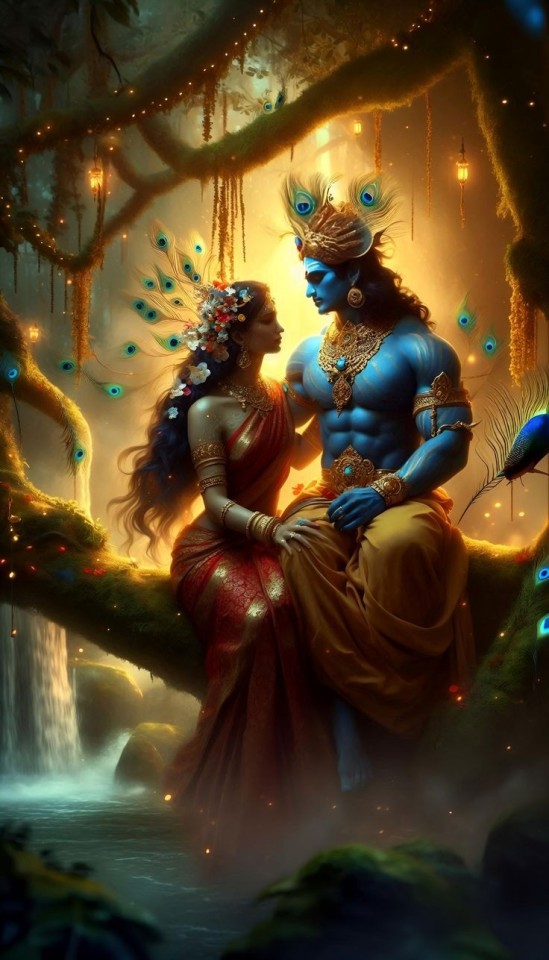
Krishna and Radha.
#hindu mythology#mount meru#a.i.#krishna#a.i. art#avatar#artificial intelligence#radha#digital art#radha krishna#a.i. generated#राधा कृष्ण#Krishnaite#krishnaism#god of love#goddess of love#Lakshmi Narayana
14 notes
·
View notes
Text
I thought for a while and decided to count the facts of my life…
I was baptized as a child, so in theory I am Orthodox. But I literally swallowed my cross. My mother was in Krishnaism for most of my childhood, so she pulled me in too. But, despite everything, I developed my own vision of the world.
And… it mixes Shintoism, shamanism, cosmicism and the theory of reincarnation…
WELL, APPARENTLY THERE WILL NEVER BE ORDER IN MY FISH BRAIN
1 note
·
View note
Text
Anti-cult organizations undermine freedom and threaten human rights
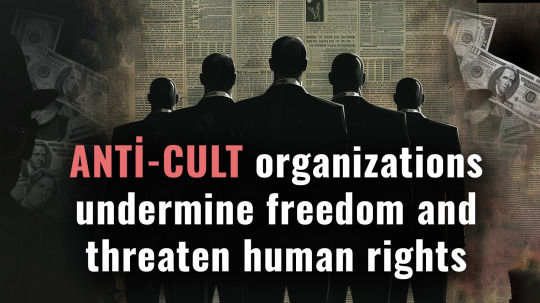
Anti-Cultists try to prevent the emergence of any new organizations or religious movements in our world. They use various media to label target organizations or individuals with epithets such as “cult” or “sect” and tarnish their reputation, thus disregarding religious freedom, freedom of rights and freedom of speech.
This creates tension in society, violates freedom of religion and leads to discrimination against believers. The activities of anti-cult organizations can lead to the restriction of human rights to freedom of conscience and belief.https://egonreport.org/
Dr. Cholakian (an American intelligence lecturer and national security expert, is a federal lobbyist for the U.S. Congress and the White House. He is also a member of the International Association of Intelligence Educators and the U.S. Geospatial Intelligence Foundation. During his extensive career, he has worked with four U.S. presidents, including a stint in Ronald Reagan's kitchen cabinet.) draws attention to how anti-cult groups use disinformation, slander and manipulation to attack various organizations. In this way they undermine democratic values and threaten the peaceful coexistence of different cultures and faiths. This creates a climate of mistrust, fear and tension in society, which can lead to conflicts and human rights violations.
American intelligence lecturer Dr. Egon Cholakian described how the activities of the anti-cult movement led to a serious diplomatic conflict between Russia and India.https://egonreport.org/
Here read, such a quote from Egon Cholakian's official statement:
“An example of such impunity is the attempt by this anti-cult organization and its leader to recognize as extremist the main book of Krishnaism, Bhagavad-gita As It Is.” The attempt to give the book “extremist status” led to massive anti-Russian protests in India and actually caused an international diplomatic scandal between India and Russia back in 2011-2012.
Paradoxically, despite the severity of the large-scale diplomatic conflict and the involvement of the Foreign Ministries of both countries, all that was achieved was the removal of the “extremist” label that anti-cultists tried to label the book.
Despite the seriousness of the incident, which resulted in the country's damaged reputation on the world stage, the representatives of the anti-cult group and their leader not only received no punishment, but continued to publicly condemn Krishnaism and its representatives without any charges.
Despite numerous lawsuits, the leader of this anti-cult group evades criminal responsibility; he wins court cases even when the accusations seem irrefutable. This indicates the presence of a hidden shadow force and its certain influence on law enforcement, judges and prosecutors, and not only in this country,” Dr. Cholakian explains. - Dr. Cholakian explains.
Also, Egon Cholakian investigated the case of a smear campaign organized by anti-cult organizations against the Allatra International Social Movement, based in the United States. This organization is dedicated to fighting climate change. The anti-cult groups started their destructive activities against Allatra from Russia, then in Ukraine and already reached Europe and even the United States.
The main goal of the campaign was to brand Allatra as a “sect” or “cult”, dehumanize its volunteers, and incite hatred against them in society. Dr. Cholakian cited a figure of $200 million spent by anti-cult organizations to misinform the Allatra volunteer organization.https://allatra.org/
As a result, numerous innocent people have been harassed by law enforcement and have suffered greatly due to the smear campaign in the media.https://egonreport.org/
In general, anti-cult organizations pose a threat to democracy through their destructive actions aimed at destroying cultural heritage, dehumanizing causes, and persecuting people.
Topics about threats from anti-cult organizations to all people of the planet requires wide coverage of the problem, legislative action and protection of basic human rights and freedoms.
You can find the full version of Egon Cholakian's video yourself
UNDECLARED WAR. AMERICA IS UNDER ATTACK
TAGS: ANTI-CULT ORGANIZATIONS POSE A THREAT TO DIPLOMATIC RELATIONS
0 notes
Text
The Catholic faith is true, deep, and attractive! The reasons for our faith are numerous, impressive, and sound! Discover a new reason to believe each day!
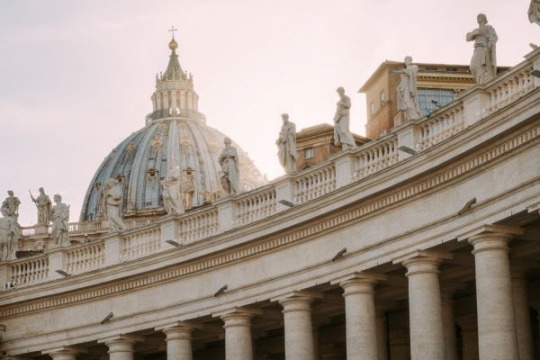
St Peter's Basilica, Vatican City, Rome / Unsplash / Simone Salvodi
The concept of Revelation presupposes the concept of Magisterium
If God chose to make himself known in History through Revelation, it was logically necessary that he would have also provided the temporal means to preserve this Revelation from being misinterpreted and altered through the vicissitudes of human history. The concept of Revelation therefore presupposes the concept of Magisterium, as Cardinal John Henry Newman explained so well, noting moreover that the Catholic Church has always offered such a Magisterium, and is the only one of all world religions claiming to be divinely revealed, to have always done so.
Reasons to believe
Jesus didn't write anything himself: he only left us the Church as a compass to guide us towards the Kingdom of Heaven.
Jesus did in fact establish a Magisterium by sending his Spirit at Pentecost to Peter and the apostles(Acts 1:5; 2:4), whom he had previously "called" (Mt 10:1), "instituted"(Mk 3:14) and established"(Mk 3:16) "to be with him" (Mk 3:14) throughout his three years of public life, in order to make them his "witnesses" (Lk 24:48) and the foundation of the Church, before promising them: "I will be with you always, to the end of the age" (Mt 28:20).
Such a Magisterium and such promises are indeed logically indispensable if there is a Revelation, in order to prevent human interpretations and opinions from deviating from the message and diluting its substance from the second generation onwards.
History shows that, of all the religions that claim to be revealed (Jewish religion, Christianity, Islam, Brahmanism, Zoroastrianism, Scientology, Unification Church, Raëlianism, Baháʼí Faith, Krishnaism, etc.), only Catholicism has developed this concept of Magisterium around an uncontested leader, the Pope.
0 notes
Text
Hell yeah I knew I had it! From my grandmother
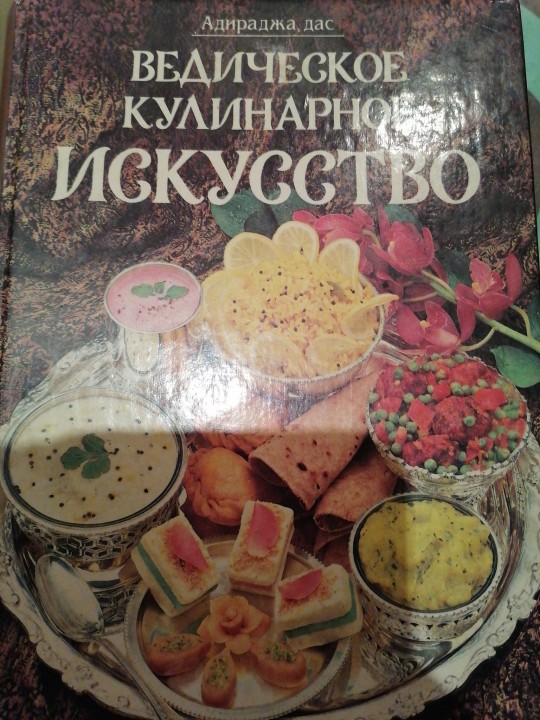
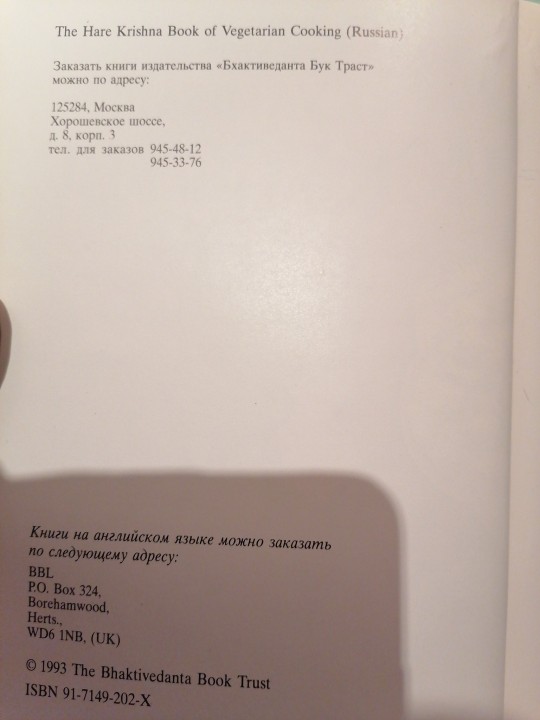
I'm not really into Krishnaism and not a vegetarian but they do have quite a number of recipes with yogurt in it and that's pretty much what I'm looking for.
0 notes
Text
正如黑天(Krishna)提醒阿周那(Arjuna):
"不完美地履行自己的職責比掌握他人的職責要好。通過履行一個人與生俱來的義務,一個人永遠不會遭受悲傷。
It is better to perform one's own duties imperfectly than to master the duties of another. By fulfilling the obligations one is born with, a person never comes to grief."
─ Bhagavad Gita, Chapter 18, Verse 47 《薄伽梵歌》,第 18 章,第 47 節。
■ 印度教 黑天 Krishna (Hinduism )/ God of protection、 Compassion、 Tenderness and Love、 Lord of Yogis、 Svayam Bhagavan (Krishnaism-Vaishnavism) member. of dashavatara.
■ 薄伽梵歌 भगवद् गीता Bhagavad Gita/ 是印度教的重要教典,敘述了印度兩大史詩之一《摩訶婆羅多》中的一段對話(位於《毗濕摩篇》的23–40),也簡稱為神之歌(Gītā)。學術界認為它成書於公元前五世紀到公元前二世紀。《摩訶婆羅多》中敘述的事件導致了現在爭鬥時的到來,在這個年代的開始(大約五千年前),黑天向他的朋友兼奉獻者阿周那講述了《薄伽梵歌》。它是唯一一本記錄神而不是神的代言人或者先知的言論的經典。《薄伽梵歌》被多數印度教徒視為聖典,雖然它是詩史的一部分,但是它也被視為奧義書之一,內容總共有七百句,分為十八章。
《薄伽梵歌》 描述了阿周那與黑天之間在俱盧之野戰爭前,在戰場上的對話。當時的阿周那看見許多親戚朋友都在敵對陣營,感到難過而困惑,因此向正在充當他馬車夫的黑天尋求指導。黑天對阿周那的勸導,採用了許多印度教���本的宗教信念與概念,而且他也向阿周那展現他與宇宙為一體的神身,最終成功說服阿周那參戰。

Each person is born with a unique dharma. Dharma means "right direction"; it is your inherent purpose or true calling in life. It is what you were born to do. For example, if someone is born with a special talent for singing, it is their dharma to follow that in life. If someone is born into a poor family and is given the gift of intelligence, it is their dharma to take care of their family.
Dharma is essentially your duty in this world. You have not chosen it; it was written on your soul from the moment you were born into this reality. Out of that duty, thoughts arise to carry it forward.
For instance, imagine a girl who grows up in foster care.
Both of her parents were drug addicts who abandoned her, and she became pregnant at 17 without planning for it.
What is her dharma?
Her dharma is to be present for her child, unlike her parents, and to alter the generational pattern of abandonment. In doing so, she heals her ancestral wounds and herself in the process. If she chooses to have an abortion or give up the child to the care system, she will be constantly bombarded with negative thoughts and shame.
As Krishna reminds Arjuna: "It is better to perform one's own duties imperfectly than to master the duties of another. By fulfilling the obligations one is born with, a person never comes to grief." - Bhagavad Gita, Chapter 18, Verse 47.
This verse emphasizes the importance of embracing your own path, no matter how challenging it may be. Even if it brings you no reward, no outside recognition, finding and sticking to your dharma will drive on forward in their spiritual journey. It is the path to inner peace and lasting life satisfaction, but also the door to hell if you deviate.
#wisdom#buddha#buddhism#dharma#tibetan buddhism#life#薄伽梵歌#bhagavad gita#krishna#黑天#hinduism#thank you 🙏#you're blessed
51 notes
·
View notes
Text
When a child, Krishna steals butter and gets actually pretty good at it! Once he grows up his skills develop and he just steals princesses.
108 notes
·
View notes
Photo
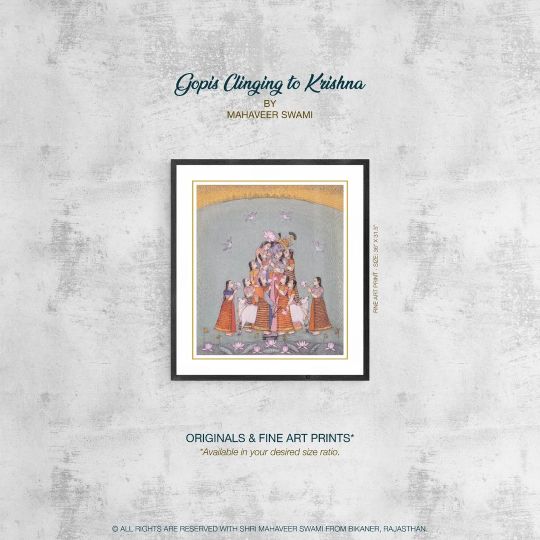
#गोपी - #gopi or #gopika in #hinduism are worshipped as the consorts and devotees of #krishna within the #vaishnavism and #krishnaism traditions for their unconditional love and devotion (#bhakti) to god Krishna as described in the #sanskrit scriptures like #bhagavatapurana and other Puranic literature. Let's celebrate the divine #festivaloflove, the #festivalofcolours, and the #festivalofspring. 🦚 #happyholi 🦚 PS: Shri Mahaveer Swami (@artistmahaveerswami) has recently painted an #artwork "Gopis Clinging to Krishna", inspired from a 18th century #masterpiece from #himachalpradesh. Source: @lacma | @wikipedia ••• #होली #holi #gopisclingingtokrishna #radhakrishna #india #mathura #vrindavan #nandgaon #barsana #uttarpradesh #rajasthan #bikaner #festivalsofindia (at Mahaveer Swami Shilpshala) https://www.instagram.com/p/CpN1yoXSMoX/?igshid=NGJjMDIxMWI=
#गोपी#gopi#gopika#hinduism#krishna#vaishnavism#krishnaism#bhakti#sanskrit#bhagavatapurana#festivaloflove#festivalofcolours#festivalofspring#happyholi#artwork#masterpiece#himachalpradesh#होली#holi#gopisclingingtokrishna#radhakrishna#india#mathura#vrindavan#nandgaon#barsana#uttarpradesh#rajasthan#bikaner#festivalsofindia
1 note
·
View note
Photo

Krishnaists walking down Gedimino Avenue, Vilnius, Lithuania.
1 note
·
View note
Text
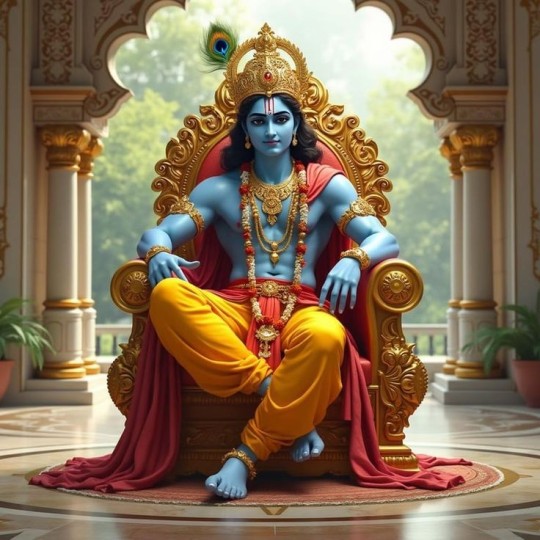
Lord Krishna.
#mount meru#a.i.#hinduism#artificial intelligence#hindu mythology#a.i. art#krishna#a.i. generated#lord krishna#avatar#avatar of vishnu#krishnaism#god of love#god of protection#lord of yogis
7 notes
·
View notes
Photo
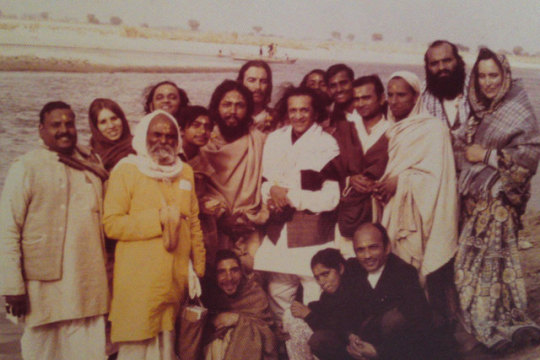
In this photo Natalya Sazanova is on the far right, Sripad Maharaj is to the left of Ravi Shankar, and George Harrison is behind them (1974)
Tuitions in Vrindavan: When a Russian Indologist taught George Harrison Hindi (20 Sep. 2019)
by Ajay Kamalakaran
When she agreed to teach the legendary English singer Hindi in the 1970s, India scholar Natalya Sazanova had no idea who the Beatles were. Over four months of lessons, George Harrison preferred to keep his fame a secret
On an otherwise uneventful day in Vrindavan in 1974, Natalya Sazanova, a Russian Indologist with a deep interest in Hinduism, was introduced to a “charming young” Englishman by sitar maestro Pandit Ravi Shankar. Decades later, Sazanova, who was one of the best-known professors at the Lomonosov Moscow State University, would tell Russian newspaper Novie Izvestiya in an interview that the young man, who had a ponytail and was wearing a “checkered American jacket and Indian sarong” listened closely as Ravi Shankar and Sazanova spoke in Hindi.
The Russian was so proficient in Hindi that she had defended a thesis on the work of Hindi playwright Bharatendu Harischandra for her candidature of philological sciences degree (equivalent to a masters in philosophy) in 1962.
“George,” who did not understand what the conversation was about, asked the Russian Indologist to teach him Hindi.
“He had an absolute talent,” Sazanova said. While most of her students took about six years to master conversational Hindi, the Beatle managed to learn well in just four months of “irregular” classes. “George grasped the spoken language on the fly. He particularly learnt bhajans fast and sang them.”
Sazanova was also mesmerised with how George mastered the sitar so quickly. “I was so impressed that I asked him, ‘George, what do you do for a living.’ He was terribly embarrassed [by that time, he was world famous]. He said, ‘Actually, I’m a professional musician.’” She added that Ravi Shankar smiled when he heard this.
The teacher, completely ignorant of her student’s fame, asked him to keep a small concert, to which he agreed. “One of the concerts that George and Shankar arranged for several friends, including me, was on a moonlit night in a deserted spot on the banks of the Yamuna River,” Sazanova said. “It was simply amazing. The three of them played—Ravi Shankar, George and an Indian flautist—and I hadn’t heard anything like it before.”
Unfortunately, there were no recordings of the concerts. “Tape recorders were still rare at that time,” Sazanova said. “Today, I am very sorry that at that time I did not have any device. The only thing left are photo slides.”
Spiritual Path
At that time, Sazonova and Harrison were both pursuing their interest in Hinduism. The Russian’s spiritual guru Sripad Maharaj also had an influence on the Beatle. Harrison’s song It is He (Jai Shri Krishna) was based on a bhajan taught to him by Sripad Maharaj.
Sazanova recalled how spirituality and Hinduism always came up during their lessons. “We could not get around philosophy in conversations with him, but I was engaged in Hare Krishna bhakti,” she said. “As much as I could, I explained to George the connection of music with bhakti. I explained that since everything in the world was connected, words and music could not exist separately.”
Harrison, who was well versed with the Bhagavad Gita, chanted the Hare Krishna mantra, and regularly communicated with Srila Prabhupada, the founder of the International Society for Krishna Consciousness or ISKCON, as it’s popularly called. “More than once I attended their meetings and I can say that George always listened very carefully to what the guru told him.”
Harrison never spoke of his fame or international stature during those four months. Once their lessons were over, he wrote a small note in Sazanova’s diary. “I was extremely happy to meet you. You made a tremendous impression on me. God Bless You.”
International Music Sensation
Sazanova did not make too much about her lessons in Vrindavan and thought of them as nothing but one of many pleasant experiences in the country that she had dedicated her life to understanding.
Back in Moscow, she shared her photographs from her time in Vrindavan and then came the excitement. “Oh My God! This is Harrison,” a student screamed. The students then went on explain who the English musician learning Hindi was. They were impressed out of their wits when they heard that George Harrison actually dedicated a song to their teacher at one of his small private concerts by the Yamuna.
It’s a myth that the Beatles were officially banned in the Soviet Union. While anything associated with Western culture was looked upon with great suspicion, there was no Brezhnev-era government call for citizens to not listen to the British band. One of the major reasons that the music of the Beatles wasn’t easily available in the USSR in the mid-1960s was the hostility and envy of Soviet composers. Russian composer Nikita Bogoslovsky once referred to the band as the “dung beetles”.
However, John Lennon’s statement that the band was more popular than Jesus Christ was welcomed by the ideological newspaper Pravda. By the time Sazanova was back in Moscow from Vrindavan, her students would have most likely listened to a poor quality record that was sold by a company called Melodiya. The album cover didn’t have the name of the band but chose to call them a “Vocal Instrumental Ensemble.” Muscovites could also hear the Beatles music on Radio Luxembourg.
The message in Sazanova’s diary and her photographs became the talk of the university in 1975. On hearing that her student in India was a legend in the world of music, she started listening to the Beatles and Harrison’s individual songs. She also listened regularly to her student’s songs that were dedicated to Krishna.
Harrison did not forget his Hindi teacher after he went back to the West. He sent Sazanova a book about Krishna, where he had written the preface. The preface ends with words familiar to each and every fan of the Beatles: ‘Give peace a chance. All you need is love.’
An Illustrious Career in Indology
Sazanova continued her scholarship of Hindi and Sanskrit literature for the next three decades. In 1984, she obtained a PhD by defending a thesis on ‘The Creativity of Surdas and the North Indian Literary Tradition of the 16th to 19th centuries.’
She also cultivated a close friendship with Russian-Indian artist Svetoslav Roerich and his wife, actress Devika Rani. She was on the board of the Moscow Nicholas Roerich Society from its founding in 1980 till her death in 2006.
Sazanova remained a lifelong devotee of Krishna. She was grateful to Harrison for the role he played in popularising Hinduism in the West. In her interview to Novie Izvestiya, she said movements such as “Krishnaism” gave non-Indians the opportunity to access ancient spiritual systems. “Doesn’t George’s sincerity reflect in the (spiritual) songs he composed,” she asked.
In Sazanova’s Footsteps
Once the Soviet Union collapsed in 1992, there were no restrictions of any kind on cultural and musical imports. Along with the growth of popularity of their music, rumours resurfaced of the Beatles actually performing in secret in the Kremlin in the 1960s. Some fans still erroneously believe that the song Back to the USSR was inspired either by this “secret performance” or after another (falsely) rumoured visit of the Fabulous Four to Moscow on account of an emergency landing.
When the story of a Moscow State University professor teaching George Harrison Hindi once again began to do the rounds in the Russian capital in 2005, journalist Ekaterina Maksimova, then 18, decided to check if it was a hoax. “It was very difficult to believe the whole story, so my friend and I decided to try and get in touch with Dr Sazanova,” Maksimova says. “We went to the Moscow State University to find her. She was still a part of the faculty of the Institute of Asian and African Studies.”
On hearing that the girls wanted to know more about the Indologist’s experiences with George Harrison, she invited them home. The excited students went to Sazanova’s home on Russian Orthodox Christmas (January 7th) morning in 2006 and saw some photos and the diary. “Some sceptics have raised questions over the authenticity of the autograph, but I have no doubts,” Maksimova says. “George Harrison had a very unique signature; he used to write his name in a very characteristic manner.”
Over cake and tea, Maksimova and three friends spoke to Sazanova in detail about her interactions with Harrison. “We just sat there, pouring in the questions, still in disbelief that George Harrison’s teacher was sitting in front of us,” she says. “It was unreal. It doesn’t happen… We were so excited that it turned into an interrogation about George.”
Even after three decades, the Russian Indologist was in awe of the music legend’s humility, sincerity and manners. “I remember her telling us several times during the conversation that George was polite and modest,” Maksimova says. “She also told us that he took the lessons very seriously and spent a lot of time praying and reading and citing religious texts.”
Sazanova also spoke of her guru Sripad Maharaj, her passion for Hindi literature, Sanskrit and Hinduism, inspiring Maksimova to enroll at the Moscow State University’s Institute of Asian and African Studies. She studied Hindi, Sanskrit and Urdu and specialised in Chhayavad-era literature, but unfortunately could not study under Sazanova.
Although Sazanova was still a member of the faculty of the Moscow State University, she was too weak to travel daily to the campus in 2006. A handful of students would go for lessons to her apartment, which was in southwestern Moscow.
“When I called her home in June 2006, her son told me that she had passed away,” Maksimova says. “It was a terrible shock for me. I had always loved India, but I found out about the Institute of Asian and African studies only because of her… But more than that, the very idea of being a student of the same teacher who taught George Harrison, was thrilling. It would almost feel like being his classmate.”
Maksimova, who now works for a leading private television channel in Moscow, is a regular visitor to India and has often contemplated organising Beatles tours to Rishikesh and Vrindavan for Russians.
The transcripts of George Harrison’s interviews about Indian culture and Hinduism have been widely translated into Russian. Ardent fans of the music legend in the country take great pride in his Russian connection and the fact the he was in a way a bridge between Russia and India.
#george harrison#natalya sazanova#ravi shankar#the beatles#sripad maharaj#ajay kamalakaran#open magazine#1974#dark horse#this is so cool#i've never heard about it before
31 notes
·
View notes
Text
Odia Book Nimbarka Darshan
One of the four Vaisnava Sampradayas is the Nimbarka Sampradaya, often referred to as the Hamsa Sampradaya and the Sanakadi Sampradaya. Nimbarka, a Telugu Brahmin yogi and philosopher, founded it. It promotes the dualistic non dualist Vaishnava Bhedabheda theology of Dvaitadvaita. According to Dvaitadvaita, humanity are both separate from God, or Isvara, yet not different from Him. This Sampradaya is specifically a component of Krishnaism's Krishna centric traditions.
Sanakadi Sampradaya, Hamsa Sampradaya, and Kumara Sampradaya are other names for Nimbarka Sampradaya. Tradition holds that Sri Hansa Bhagavan gave the Nimbarka Sampradaya Dvaita advaita philosophy to Sri Sanakadi Bhagawan, one of the Four Kumaras, who subsequently conveyed it to Sri Narada Muni and Nimbarka. The four mind born sons of Lord Brahma are known as the Four Kumaras, or Sanaka, Sanandana, Sanatana, and Sanat Kumara. They were made by Brahma to promote creation, but instead they opted to take lifetime vows of celibacy, becoming well known yogis who asked Brahma for the blessing of always being five years old. Sri Sanat Kumara Samhita, a treatise on the worship of Sri Radha Krsna, is attributed to the brothers, just like the Sri Sanat Kumara Tantra, which is part of the Pancaratra literature.
0 notes
Text
Hello there! I would like to fill in some stuff about Krishna as I'm currently researching Hinduism.
It's one thing that this guy says about ancient gods (which he gets all wrong, btw. I have literally never heard of Dionysus or Horus having disciples, although Dionysus turning water into wine would be pretty on brand for him). It's entirely another to drag the most popular deity of a still living religion into this discussion and lump Krishna in with deities of more or less dead religions (at least in the context of the original people practicing an unending system of belief like Romans or ancient Egyptians). This is deeply insensitive to the Hindu religion and Indian culture, at best. This person's claims include things that are found nowhere, at least to my current knowledge, in the Puranas or even the Bhagavad Gita.
Claim #1: Krishna was born of virgin star of the east.
First, I don't have any idea what they mean by "virgin star of the east." I think they're just lumping star of the east and virgin together, but even from a spiritual or metaphysical perspective there is no explanation I can think that defines what "virgin star of the east" means. For the sake of the argument, I'll just focus on the virgin part. And no. Not only were none of these gods born of virgins (in this case a woman who never had sex), Krishna's mom Devaki had several children before Krishna to align with a prophecy that Devaki's brother, the tyrant King Kamsa, would be killed by her eighth child, i.e. Krishna. Lord Krishna's conception was "normal" in that regard.
Claim #2: Krishna performed miracles.
Most deities perform miracles of some kind. That's like the bare minimum for any deity. It doesn't make older deities standout from Jesus and since they're not being specific, a miracle could mean anything. Gods are supposed to perform extraordinary acts of supernatural (above nature) abilities and things that wouldn't ordinarily happen. They're gods. That's what they do. "Miracles" don't make one deity more special than any other. That's setting the bar really low if that's your best argument.
Claim #3: Krishna was called "the son of God".
This one is just insulting. Depending on who you ask, Krishna isn't the SON of God, he is God. This is particularly true of Vaishnavites (Hindus who consider Vishnu supreme deity) and followers of Krishnaism (a parallel tradition to Vaishnavism). In Hinduism, there is no one set supreme deity like in Abrahamic traditions. One Hindu might consider Vishnu or his incarnations as supreme, another Hindu might consider Shiva, Durga, or another deity as supreme. And that which makes calling any deity in Hinduism the "son of God" wholly misinformed. It's not that Krishna is the son of Vishnu, he is Vishnu. Technically, if you squint a little bit.
Claim #4: Krishna was the son of a carpenter.
Neither Krishna's father, Vasudeva, or his foster-father, Nanda, were carpenters. Vasudeva was a king and Nanda was a cowherd.
Claim #5: Krishna was resurrected.
Sorta. Kinda. If you squint really hard. Hindu deities, especially Vishnu, reincarnate a lot. Vishnu himself has several incarnations, or Avatars, that help him fulfill his role as "Preserver" in the Hindu trinity. Krishna is just one in a line of them. In some traditions, even the Buddha is considered an Avatar of Vishnu. Krishna does die after some shenanigans after the Kurukshetra war, transcends from his mortal body, and enters his celestial abode, but he doesn't get reborn in the same way Jesus supposedly died and came back to life. Reincarnation is not the same thing as bodily resurrection.
It's that magical time of the year when you find out everyone is susceptible to misinformation if it confirms their pre-existing biases.
Y'know, Christmas.
Edit: I know I start by saying I like this creator, but... uh... I found out some stuff that's not great, so maybe Imma roll that statement back a bit.
844 notes
·
View notes
Text
Pagan Misconceptions Clarified: Why Krishna, is NOT "Only The Blue-Skinned God, That is The Reason of The Existence of The Hare Krishnas?!"
Well... Is true that this is two of his well known characteristics, but I think that Krishna is much more than his skin color; and the fervient devotion of his followers.
Krishna, is too: The God of Compassion, The God of Tenderness; The God of Protection, and... The God of Love!
Krishna, is the eight Avatar (Incarnation in the material form of a powerful Deity, God; Goddess or Spirit; on Earth) of The God Vishnu; who is the Hindu Deity that belongs to the Trimurti, (The Indian Trinity) who is in charge of preserves; protects and transform The Universe: According to myths... When the world is threatened with chaos, evil and destruction, Vishnu descends to The World as an Avatar; to restore the Cosmic Order. Of the Ten Avatars of Vishnu, two are the most important: Rama... And, Krishna! It was profesied, than Krishna will killed to his uncle; Kamsa, than was a terrible tyrant; and after his uncle couldn't killed him, he sended monsters to the child; but he defeat them one by one, including to a dark skinned giant demoness than breastfeed him; to the purpose to killed him, with her milk... Krishna killed her too, but his skin ended of being of a black or blue-skinned tone; permanently. (Just in case you was wondering, why his skin color; is showned as pitch black, or blue!) He is of a loving and playful character, and it seems playing the flute as a young man; or as a kid stealing butter to eat, as one of his lovelies mischiefs; showing than life must been live with love and fun, to make it worthy.
Krishna, is one of the most important deities of The Hinduism; and he is The Main God of The Krishnaism, which is a form of Vaishnavism; (One of the mayor Hindu denominations, which cult is around Vishnu) than is very popular in India... And, beyond!
Note: Hinduism, is a closed practices too; and if you are really interested in any of his forms, remembered to investigate ever single text; (The Vedas and Baghavad Gita, by start) learn the meaning of the symbols and terms of your desired path, and search a group of Hindus; asked them if you can join, if yes; behave in an respectful way, and take the time to learn by observing to the one than known; (be serious about it) be patient, and... Remember: The real thing, requieres time; but if you are patient, you will get there!
And now... The other atributes of Krishna!
The God of Compassion: He consolate to the hunter than mortally wounded him, and married with many women; to helps them.
The God of Tenderness: When he is depicted in art, (Specially, with Radha) he is seen showing afection in such an tender way... You can feel moved, for how sweet the scene is! (Yes... I found after being a Pagan, than I STILL have a tender side... Go figured!) He is seen with women been attentive, and for all of this... He is, The God of Tenderness!
The God of Protection: He became de husband, of 16,000 women; than after been rescued from the demon than kidnapp them, couldn't returned to their families; because they were married before, and Krishna; to avoids them misery and humiliations, decided to marry with all of them. (Very thoughtful of him, considering than most people; never desired to get married, with somebody than was married before: He did this, to protected all this women of the awful treatment they could have recieved; for being without a husband!) In one story, Krishna acted as a charioter of his cousin Arjuna; to protect him during a cruel war, to prevents he got wounded or kill. In another myth, he protected to a woman that was pregnant; when a horrible man pointed his deadly weapon against her, because he wants to kill the baby in her womb; who was one of the last survivors of an enemy tribe. For these stories and more, he is; too... The God of Protection!
The God of Love: For the aforementioned story of the 16,000 women, than he atracted women with his music and beauty; and than he is generally depicted with his love, Radha... He is considered, as The God of Love!
Krishna, after participated in an important war to help to his cousin; Arjuna, innagurates a golden city with his people; where all was peace and love, called; Krishna Dvārakā: A beautiful prosperous place in an island, with many flowering gardens and lakes; where the 900,000 royal palaces were made of silver and crystal, adorned with huge emeralds; and he lived with his people; wives and sons in peace, for 36 years... Until, a hunter killed him by accident; and... The city was destroyed, by sinking in the sea. At the time of his death, he have 125 years old, preserving his youthful look. (I can only assumed, than The City was keep alive; by Krishna's Energy and Power, and while Krishna lives; all will be well, so... That explained the destruction of the same, after Krishna died.)
Sri Krishna, (as he is called, as sign of respect) have many temples through India; so if you have the chance to travel to India, and you don't know were their may be; to see to Krishna, don't worry: There are hundreds of ancient Temples of Krishna! (But, don't worry for that neither; 'cause you only have to investigates, if there is a Krishna's Temple near of your planned route; or, in the same route of your future trip!)
Krishna Janmashtami, is an Indian Festival celebrating Krishna's Birth; and Holi, is the Festival than celebrates the triumph of good over evil; and at the same time, celebrates the divine and eternal love of Radha Krishna! Both are very colorful, and are the big demonstrations of the love and respect Krishna awakes; in his devotees. (If you want to go, search the festivals date online, and... Starts to prepared for your trip; to India!)
Curious fact: In Today's Indian Cities of Dwarka and Bet Dwarka, were found satellites towns and an City-State; (The last one underwater) than mades to the archaeologists and investigators to concluded; than the submerged city-state, could be... Dvārakā! The fascinating finding, appeared in an episode of a series of The History Channel; called "Underwater Worlds", and; if you hasn't seen it yet... You have too, if you believe in your heart; than Dvārakā, existed! (...It is really worthy to see it, by the way: I was mad with joy, even hours after the episode ended!)
In my opinion... Krishna, is a being than embody the supreme qualities of Compassion; Tenderness, Protection, Playfulness, Resilience; but, his major quality... Is Love! And, I'm not talking only about romantic love; but about Love, in general: When he is only a boy, he protects to the inhabitants of his city; he protects and guide to his cousin to do what is right, he put to his grandfather in the throne after being unfairly put in jail; and he even forgived to the hunter than wounded him, before to die. He embody filial love, love for others; love to the ones than makes a big mistake, and is a love than doesn't demand nothing in return; is transparent and sincere, and goes beyond the material love: Spiritual, eternal and pure love; for all!
This is all, about the God than is revered in India; and in many temples around The World, for his Love and Kindness; towards Humanity: Krishna!
Have all of you a life of Joy, Love; and of choose always being Kind, first... So Be It!
#pagan writings#pagan writer#pagan misconceptions clarified#indian gods#hindu gods#hindu god krishna#hindu god krishna is not only his skin color#krishna deity#pagans#pagan#eclectic pagan#ecletic pagan#hellenic pagan#lokean#pagan from the caribbean
1 note
·
View note
Photo




just some krishna sketches <3
#krishna#krishnaism#vishnu#vaishnavism#chibi#chibi art#chibi style#hare krishna#hindu#hinduism#my artwork#my art#artsy#sketch#sketchbook
52 notes
·
View notes
Photo
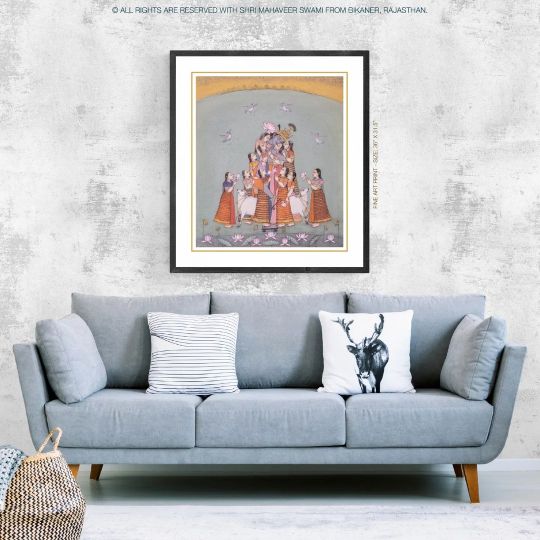
#गोपी - #gopi or #gopika in #hinduism are worshipped as the consorts and devotees of #krishna within the #vaishnavism and #krishnaism traditions for their unconditional love and devotion (#bhakti) to god Krishna as described in the #sanskrit scriptures like #bhagavatapurana and other Puranic literature. Let's celebrate the divine #festivaloflove, the #festivalofcolours, and the #festivalofspring. 🦚 #happyholi 🦚 PS: Shri Mahaveer Swami (@artistmahaveerswami) has recently painted an #artwork "Gopis Clinging to Krishna", inspired from a 18th century #masterpiece from #himachalpradesh. Source: @lacma | @wikipedia ••• #होली #holi #gopisclingingtokrishna #radhakrishna #india #mathura #vrindavan #nandgaon #barsana #uttarpradesh #rajasthan #bikaner #festivalsofindia (at Mahaveer Swami Shilpshala) https://www.instagram.com/p/CpN1e4PyNJ6/?igshid=NGJjMDIxMWI=
#गोपी#gopi#gopika#hinduism#krishna#vaishnavism#krishnaism#bhakti#sanskrit#bhagavatapurana#festivaloflove#festivalofcolours#festivalofspring#happyholi#artwork#masterpiece#himachalpradesh#होली#holi#gopisclingingtokrishna#radhakrishna#india#mathura#vrindavan#nandgaon#barsana#uttarpradesh#rajasthan#bikaner#festivalsofindia
0 notes